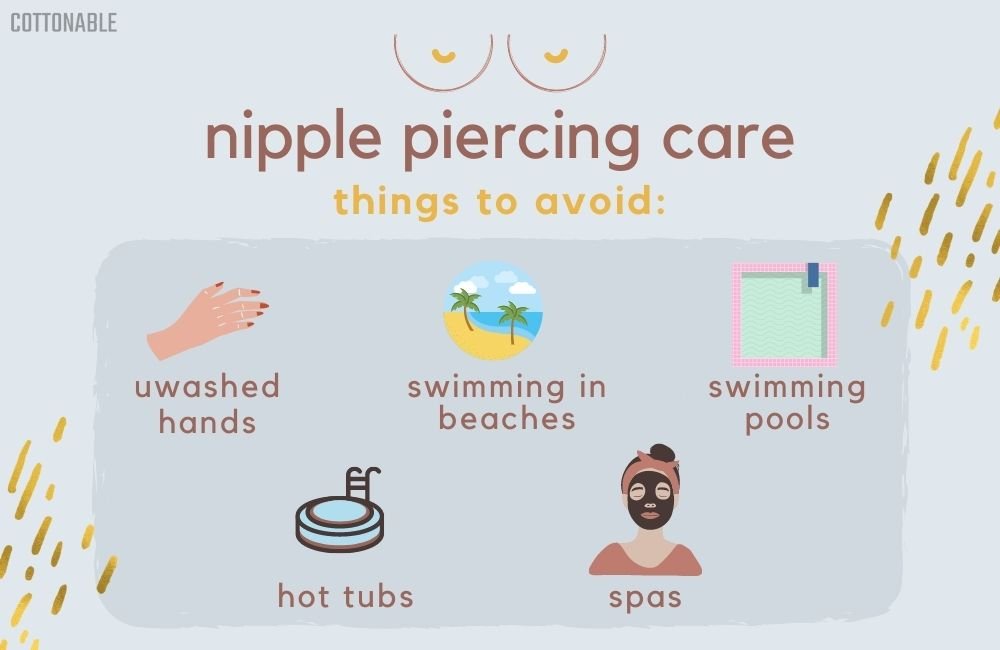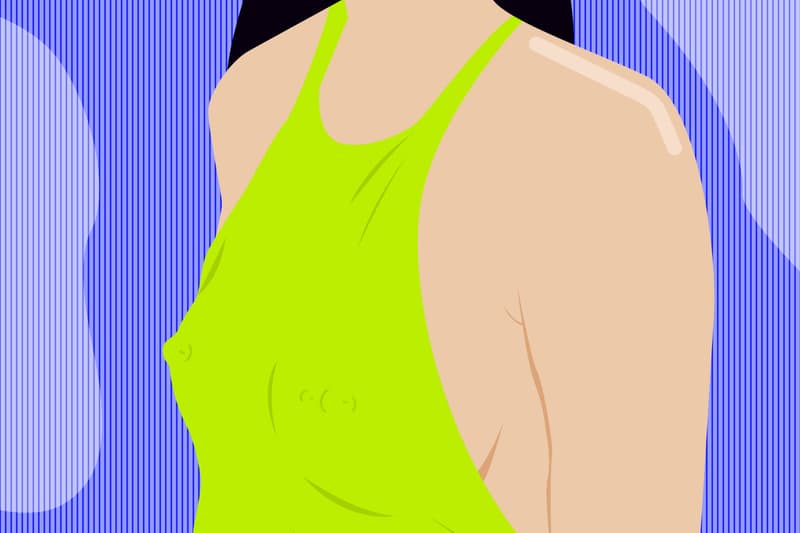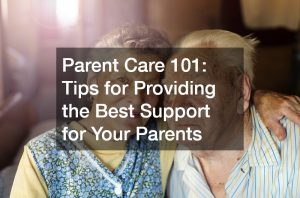Let’s get this out of the way: ALL forms of piercings have some amount of pain and will require plenty of aftercare while it heals. But some piercings are much more painful than others.
For instance, getting an ear piercing on your earlobe won’t be as painful as, say, getting genital piercings. And this isn’t a subjective thing: we’re talking about piercing cartilage versus piercing actual body muscle with over 4,000 nerve endings.
Because of this high amount of pain, many people may be hesitant to get a piercing in some of the more sensitive parts of their body. But if you’re one of the fairly many people who see the beauty and style in nipple piercings (said to be one of the most painful forms of body piercing), then this article is for you. Here’s what you need to know about getting a nipple piercing, what to expect, and how to provide proper aftercare during its healing.
- Before Getting Pierced
- Nipple Piercing Pains
- Getting Pierced
- “How Long Will My Nipples Be Sore After Piercing?”
- Nipple Piercing Aftercare
- Nipple Piercing Infection
- What Can I Do After My Piercing Heals?
- Will My Piercing Hole Ever Close?
- What Can I Do To Make My Nipple Piercing Heal Faster?
- Complications of Having a Piercing
Before Getting Pierced
There are a lot of things to consider prior to getting pierced. First of all, you have to choose whether you’re getting pierced on one nipple or both. Originally, nipple piercings became popular in the ’60s in the LGBT+ and BDSM community, but became popular to the general public shortly after. But in recent years, there’s been an uptick of women who want to get piercings among female celebrities, like Rihanna and Kendall Jenner sporting nipple piercings.
Next, you have to choose the style and metal. There are two popular styles to nipple piercings: barbells and hoops. Barbells are much more popular, and with good reason: barbells are less likely to get snagged (which could cause damage, tissue repair, and plenty of pain if it does) and therefore heal much faster.
Next, you have to choose the metal. The safest and most affordable option is stainless steel, but be careful about where you buy your stainless steel as cheaper types may have nickel or other non-hypoallergenic metals mixed in. Make sure your piercings say “medical-grade” or “implant-grade” stainless steel.
More expensive piercings are made of gold, titanium, or platinum, but expect these prices to go upwards of $50 for a small piercing.
Nipple Piercing Pains
If you’ve experienced ear piercing before, expect that nipple piercings may be a more painful experience (probably even one of the most painful). This is because your nipple’s nerve endings communicate directly with the brain (the same way the nerves in your genitals do).
Nipples are a human’s erogenous zones, which means they overstimulate your brain for pleasure. This becomes a double-edged sword when you’re getting pierced as this means your nerves heighten the feeling of pain. It’s tolerable for some people, especially those who have had other piercings in the past.
Getting Pierced
You’ll find plenty of DIY nipple piercing videos online, but we do not recommend trying to give yourself a nipple piercing. Professional body piercers have the tools to safely give you piercings without damaging your body tissue more than necessary. They also know the safety procedures of keeping their tools clean to avoid giving you an infection in the process of getting pierced.
This video may be graphic for some, but if you’re really interested to see what a nipple piercing will do to their body, take a look.
Take note that there will be some blood during the procedure. There will be some form of pain whether or not you do one or both nipples. But think of it as a temporary sharp pain. If thousands of men and women can survive nipple piercings, you can brave through it, too!
Different Types of Nipples
Of course, everyone’s bodies are different. You might notice that your nipples may not look like the ones in the video. Do not worry: professional body piercers know how to pierce small, inverted, or flat nipples for men and women.
“How Long Will My Nipples Be Sore After Piercing?”
This is a common question people ask when they are considering nipple piercing. Typically, you’ll be sore for a week after the piercing. At the same time, you may experience bleeding, itching or discharge from your wound. Don’t panic! That’s just part of the nipple piercing healing process. Just ask your doctor or the piercer to recommend ointments or anything that can subdue the discomfort.
Expect your nipples to feel irritated and/or sore for the following months. The discomfort will eventually subside as the days progress.
Since your nipples will be extremely sensitive after the procedure, clothes may also cause discomfort — particularly your bra. Some people prefer to wear their bras since the pressure helps with the minor discomfort that comes with a nipple piercing. Others prefer not to wear any bra after. If you choose not to wear a bra, wear soft and clean tops that avoid accidental nipple piercing jewelry snags (which are more painful).
On the other hand, men who plan to get their nipples pierced can wear a sweatshirt or a loose t-shirt during the healing process.
In case you feel pain from your nipple piercing, consider the following tips:
- Take pain medications. Ibuprofen, like Advil, can reduce discomfort. Seek recommendations from your doctor first.
- Use sea salt soak to promote nipple piercing healing.
- Apply a cold compress or an ice pack to reduce the swelling.
- Tea tree oil may also reduce the pain and swelling.
Nipple Piercing Aftercare
Immediately after piercing, you may experience slight pain, tenderness, and possible bleeding. This is normal as your piercing is only just starting to heal. Take an over-the-counter painkiller to mitigate the effects. Clean your piercing every day to avoid contamination and crusting.
Piercings should stop being painful after a few days. But on average, it takes six months to a year for a nipple piercing to heal completely. While most nipple piercings will heal normally, a few types of bodies may reject a nipple piercing. If you see a red streak across your nipple, remove the piercing to avoid significant scarring.

Since it takes months to a year for a nipple piercing to heal, do not play or fiddle too much with it during the first few weeks. Pulling it, removing the piercing, and touching it too much can cause an infection or prolong its healing time. You should not remove your piercing for at least six months.
Avoid exposing your nipple to contamination during the first three months. This includes:
- Unwashed hands
- Swimming pools
- Spas
- Hot tubs
- Swimming in beaches
Nipple Piercing Infection
Like other types of piercings, your nipple piercing may be susceptible to infections. You might have contaminated it with bacteria (e.g. unwashed hands, swimming, etc.) or used cheap starter piercings while it was healing (which caused skin irritation).
You can tell your piercing is infected if you show the following symptoms:
- Slight fever
- Swollen lymph nodes
- Red, inflammed, tender, and painful nipples
Call your professional piercer for advice or see your physician. You may be given topical ointments or oral antibiotics.
What Can I Do After My Piercing Heals?
It usually takes around six months for a nipple piercing to fully heal, so you can only take it out after then. But it’s possible your piercing may not be fully healed yet, so as much as possible, do not remove it until after one year.
If you really have to, remove it for short periods of time to avoid your piercing from closing up. According to some professional piercers, your skin may start to close up within a few minutes.
After it’s fully healed, you can switch out your starter piercing with a new one. Again, it should ideally be hypoallergenic to avoid irritation. If you’re not sure how to change your jewelry, go see a professional to change it for you.
Will My Piercing Hole Ever Close?
There are many situations where you might lead your piercing hole to close. During the healing period, you need to keep the piercing on 24/7 as your skin can close and make the hole too small to return the piercing once more. If this ever happens, you need to see a professional body piercer to re-apply the piercing on your body, and the healing process will restart.
If your piercing has fully healed and, sometime in the future, you may find that nipple piercings no longer fit with your style, you can opt to remove it. Be warned that it is possible for the hole to close up quickly. There are some cases of people whose nipple piercing holes stay open even without piercings applied, but this is not the case for everyone.
And if you want to avoid repeating the piercing and healing process the next time you want nipple piercings on, it might not be a risk you’ll want to take.
What Can I Do To Make My Nipple Piercing Heal Faster?
Saltwater soaks are one of the best ways to speed up the nipple piercing healing process go faster. All you need is a bottle of non-iodized sea salt and a gallon of water. Avoid using tap water to prevent infection. Instead, add salt to your distilled water and use this saline solution to wash your piercing. Do it once or twice a day and avoid touching your piercing to speed up the healing process.
Complications of Having a Piercing

Nipple piercings can be very stylish under the right clothes (thin, sheer clothes can expose the piercing tastefully). Or, if you have a partner or just want to beautify your body through the piercing, it can be a great choice for those with unconventional and edgy tastes.
Unfortunately, there are some complications to having nipple piercings.
Getting Through Metal Detectors
For starters, your piercings will set off metal detector alarms and metal detector wands. According to professional body piercer and author of The Piercing Bible, Elayne Angel, quality piercings are non-ferromagnetic and will not set off alarms, but it may set off wands that are much more sensitive.
The safest bet is to use a “retainer” piercing when you don’t want to show your nipple piercing. This is a glass barbell used to maintain your piercing hole.
It’s often used in surgeries to avoid snagging or affecting medical procedures, but it can also be used for everyday purposes if you want to avoid getting into these situations. This way, you can pass through security detectors without any incident.
Should you choose to wear a metal piercing, you may need to undergo a few added security steps. As of 2008, it’s illegal for TSA agents to force you to remove your piercing if you’re going on a flight. But they may request a visual inspection to prove that you are wearing a nipple piercing. This may take time (not ideal if you’re trying to catch a flight) and may be an inconvenience.
Sexual Activity
Professional body piercers recommend avoiding sexual activity for at least three to four weeks. As much as possible, avoid letting your partner touch your piercings with unwashed hands, as foreign germs on their hands could infect your piercing.
There’s no substantial evidence that suggests that nipple piercing makes sex better or heightens pleasure because it makes your nipples more sensitive. But what it does for many cases is that it makes flat nipples stick out more, which can make a difference in sexual activity.
Getting a nipple piercing can be a good way to heighten your level of style and look more like the way you want to. It’s also a great way to express yourself through body art. But before you get one, it’s important to know what to expect and what you can or can’t do during the healing process.











